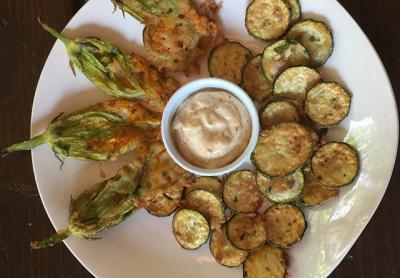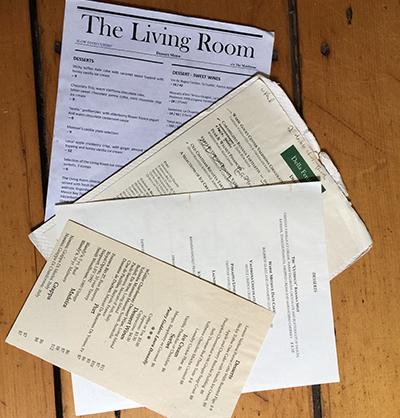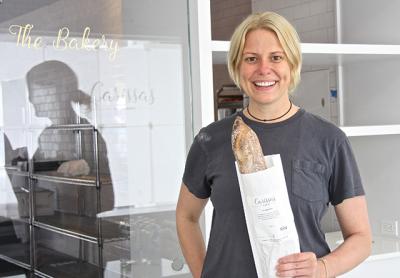Seasons by the Sea: Porgy: Sweet by Any Name
Seasons by the Sea: Porgy: Sweet by Any Name

If bluefish are the Rodney Dangerfields of the fish world (“don’t get no respect”), then surely porgies are the juvenile delinquents. They are tough little fellas — thick-skinned, bony, and travel in gangs. But once you get past that “rebel without a cause” exterior, they are sweet and worthwhile.
Porgy is the name in the United States for any fish in the family Sparidae, which includes over 100 species. There are many varieties around the world and many more names, most of them far more charming than “porgy.” Sea bream, scup, sheepshead, mischuppaug, and if you dig deep into the Food and Drug Administration’s list of approved fish, you’ll find that some species of bream are known as “bogue” and “boops boops.” The gilt-head bream, common in Europe, is also known as orata, dourada, tsipoura, and awrata. The name mischuppaug comes from the Narragansett Indians. Shortened to scup, it is said to mean “fertilizer,” because that’s what it was used for long ago.
The introduction of trawl fishing in the first half of the 20th century hurt the porgy population, along with fluke and bass, and by 2005 porgy was declared overfished. When quotas were put in place in the 1990s, the fish population returned bigger and better, a good sign according to Seafood Watch, a source for fish sustainability. This is particularly good for porgy fans because this fish is best cooked whole and preferably in the one-pound range, as those bones are easier to remove.
Porgy are white fleshed, relatively lean, flaky, and sweet, similar to red snapper. They will take just about any kind of bait, which makes them fun for children to catch. At fish markets, they are ridiculously reasonable, as low as $2.99 per pound UpIsland, and around $5.99 per pound at Citarella and the Seafood Shop in Wainscott. You definitely want to buy them whole, gutted, and scaled. From there you can prepare them any way you would a whole fish: baked, pan-fried, stuffed, on the grill.
This fish has had a reputation for a long time as lowly bycatch, trash fish, and throwaway, but many chefs in the know on the East End have been serving it for years. Joe Realmuto and Bryan Futerman of Nick and Toni’s cook it in their wood-burning oven . . . and have the good sense to call it Montauk sea bream on the menu. Jason Weiner and Jeremy Blutstein at Almond shared a photo of one of their porgy dishes, which can only be described as “porgy pornorgy,” slathered with olive oil and lemon juice, fresh herbs, black olives, orange slices, and more.
George Eldi, a part-time resident of Lazy Point and proprietor of Wines by Nature in Wading River, suggests serving porgy in fish tacos, along with a cold “clean, fresh, vibrant Gruner Veltliner wine from Austria” that can cut through the taco spices. Colin Ambrose of Estia’s Little Kitchen in Sag Harbor, seconds that recommendation, calling porgy “the best taco protein.”
My favorite, lazy research method for fun food stories is Facebook. When it comes to food, everybody has a robust opinion, especially chefs and East End friends. Dan Rizzie, a local artist and funnyman on a par with E.B. White replied: “Porgies are one of the most misunderstood yet edible fish that are readily available and catchable in our area. The traditional complaint is they are just too bony. Listen, sports fans, all fish are too bony.” He goes on to say “I usually carry a bucket on my boat filled with water and put all the porgies I catch in there.”
He throws back the little ones, scales and guts the big ones, seasons them with oregano, olive oil, and lemon juice, and grills them for about four minutes per side. “Stop complaining about bones and cook yourself some porgies!” Wait, Dan, you have a boat and haven’t invited me out on it. . . ?
Eleni Prieston recommends a similar recipe, Greek-style, seasoned with lemon juice and olive oil and grilled whole. She also said “remember . . . they used to toss blowfish back, and now they’re a delicacy.”
Adrienne Nelson, a fellow girl-chef I used to work with at the Living Room in East Hampton, suggests Thai-style, dusted with rice flour, fried, and served with Thai condiments. She now works at Prune in New York City and kindly shared its recipe for zuppa di pesce, which includes porgy.
So c’mon people, try stepping away from those expensive filets and steaks of tuna, swordfish, and striped bass. Broaden your aquatic horizons and try our local porgies, Montauk sea bream, boops boops. A fish by any other name would be just as tasty. . . .
The State Department of Environmental Conservation’s website has information about the porgy season, size requirements, and catch limits.
Click for recipes




